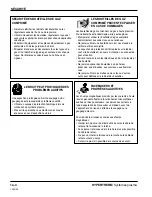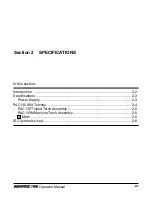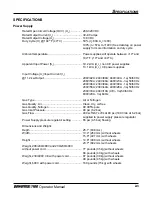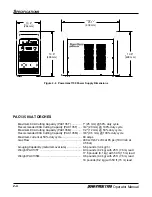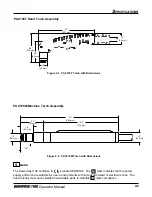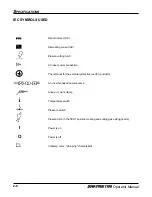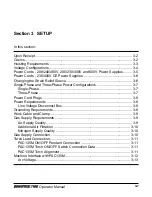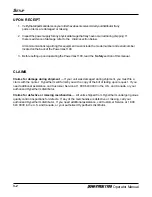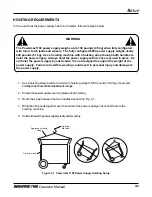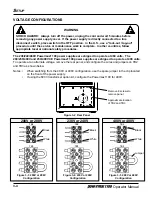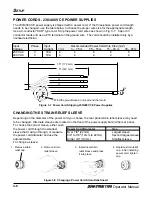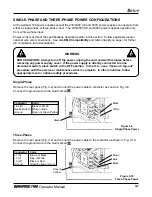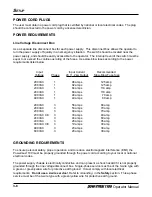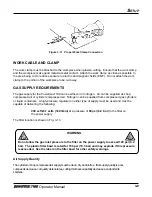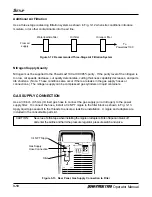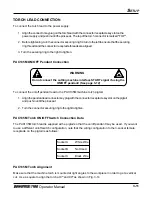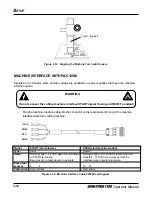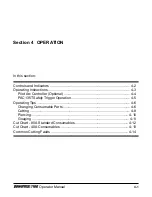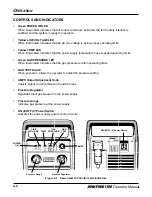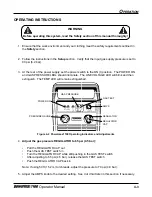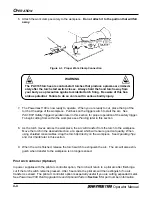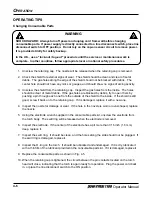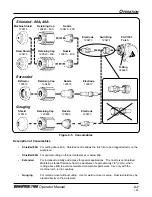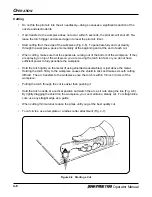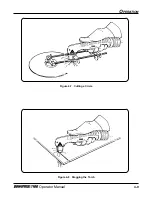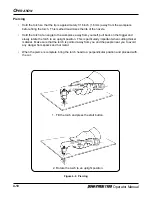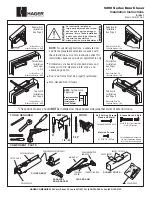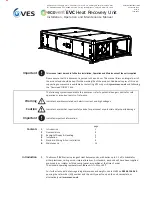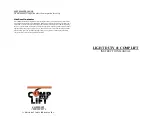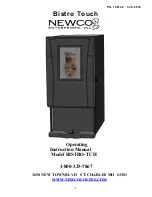
3-8
S
ETUP
Operator Manual
POWER CORD PLUGS
The user must obtain a power cord plug that is certified by national or local electrical codes. The plug
should be connected to the power cord by a licensed electrician.
POWER REQUIREMENTS
Line Voltage Disconnect Box
Use a separate line disconnect box for each power supply. This disconnect box allows the operator to
turn the power supply off quickly in an emergency situation. The switch should be located near the
power supply, and should be easily accessible to the operator. The interrupt level of the switch must be
equal to or exceed the continuous rating of the fuses. Use slow-blow fuses according to the power
requirements listed below.
Input
Input Current
Recommended
Voltage
Phase
@ 11.2 kw Output
Slow-Blow Fuse Size
200 VAC
1
96 amps
125 amp
208 VAC
1
92 amps
125 amp
230 VAC
1
84 amps
110 amp
240 VAC
1
80 amps
110 amp
400 VAC
1
48 amps
70 amp
480 VAC
1
40 amps
60 amp
200 VAC
3
56 amps
80 amp
208 VAC
3
53 amps
70 amp
230 VAC
3
49 amps
70 amp
230 VAC CE
3
33 amps
40 amp
240 VAC
3
46 amps
60 amp
400 VAC
3
28 amps
35 amp
400 VAC CE
3
19 amps
30 amp
480 VAC
3
23 amps
30 amp
600 VAC
3
20 amps
30 amp
GROUNDING REQUIREMENTS
To ensure personal safety, proper operation, and to reduce electromagnetic interference (EMI), the
Powermax1100 must be properly grounded through the power cord according to your local or national
electrical codes.
The power supply chassis is electrically conductive and can present a shock hazard if it is not properly
grounded through the line voltage disconnect box. Single-phase service must be of the 3-wire type with
a green or green/yellow wire for protective earth ground. It must comply with local electrical
requirements. Do not use a 2-wire service! Refer to
Grounding, in the Safety section. Three-phase
service must be of the 4-wire type with a green/yellow wire for protective earth ground.

